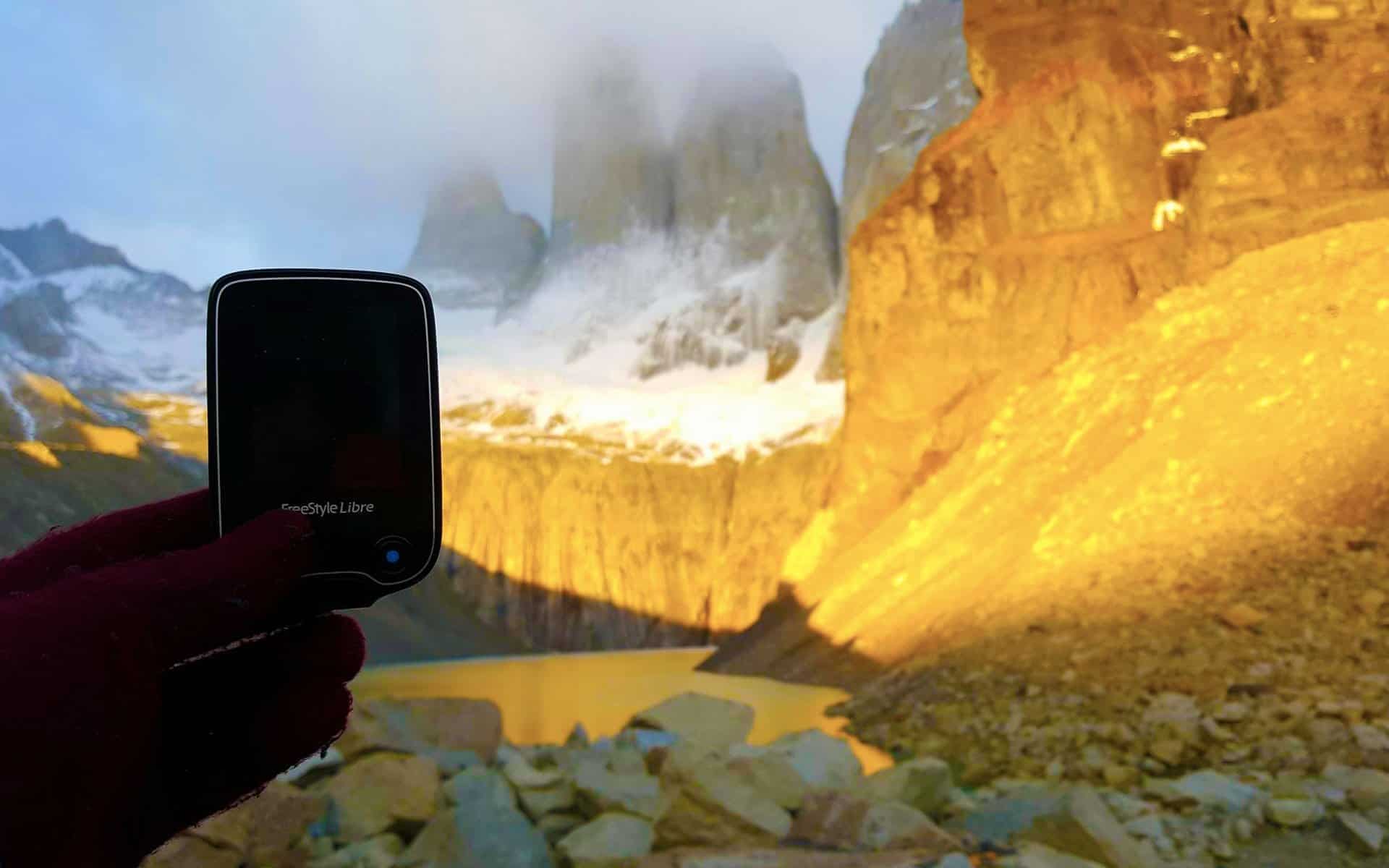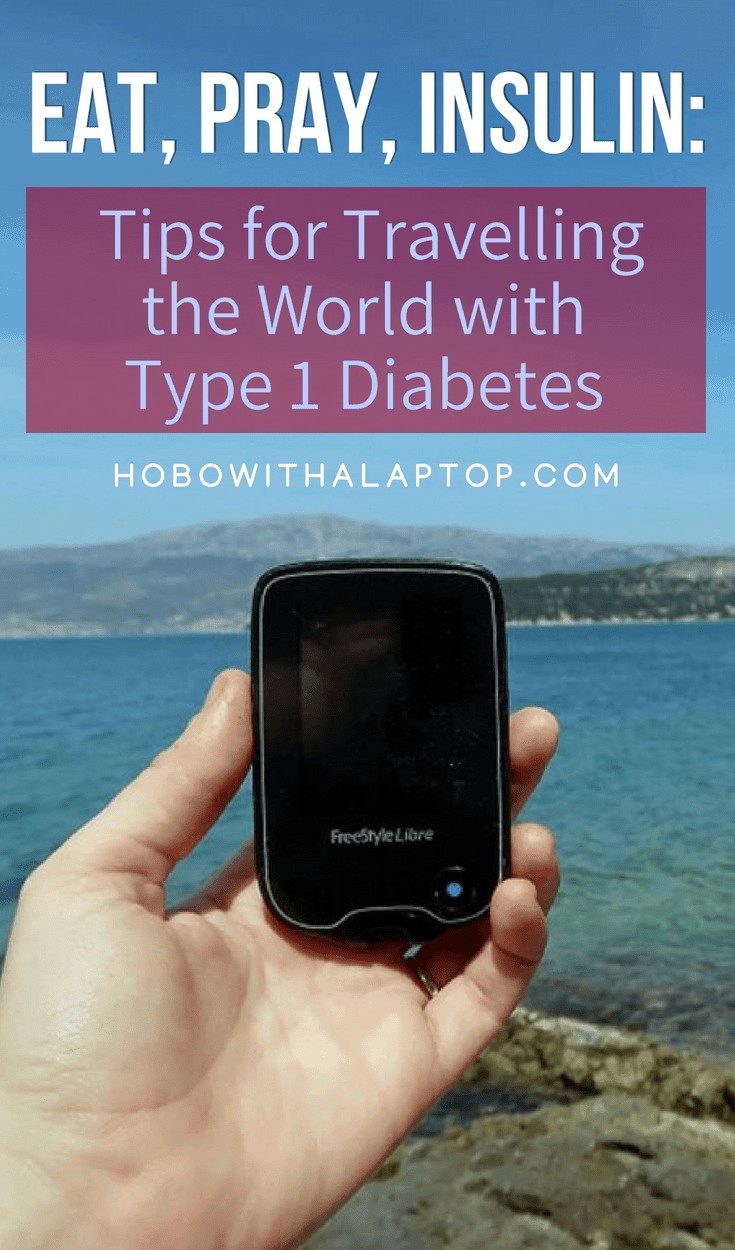

This is a guest post by Cazzy Magennis from Dream Big, Travel Far is about travelling with insulin and other tips on what to carry in your diabetes travel kit.
So, you want to travel the world, but you have that stupid chronic illness called type 1 diabetes. Don’t worry –I’ve got you covered.

Yes, type 1 diabetes is annoying and over 300,000 Canadians live with T1D. You didn’t cause it, and now you’ve got to deal with it.
Unfortunately, travel has a lot of different elements that can cause trouble for our type 1 diabetes, including altitude, new time zones, new climates, new foods, keeping insulin refrigerated –and I’m just getting started.
To help ease the burden of traveling with type 1 diabetes, I’ve put together some of my top tips for traveling with insulin and everything that goes along with it.
I’ve been to over 30 countries with my type 1 diabetes and it’s true that with a little planning and common sense, you can have just as much fun as your non-diabetic counterparts!
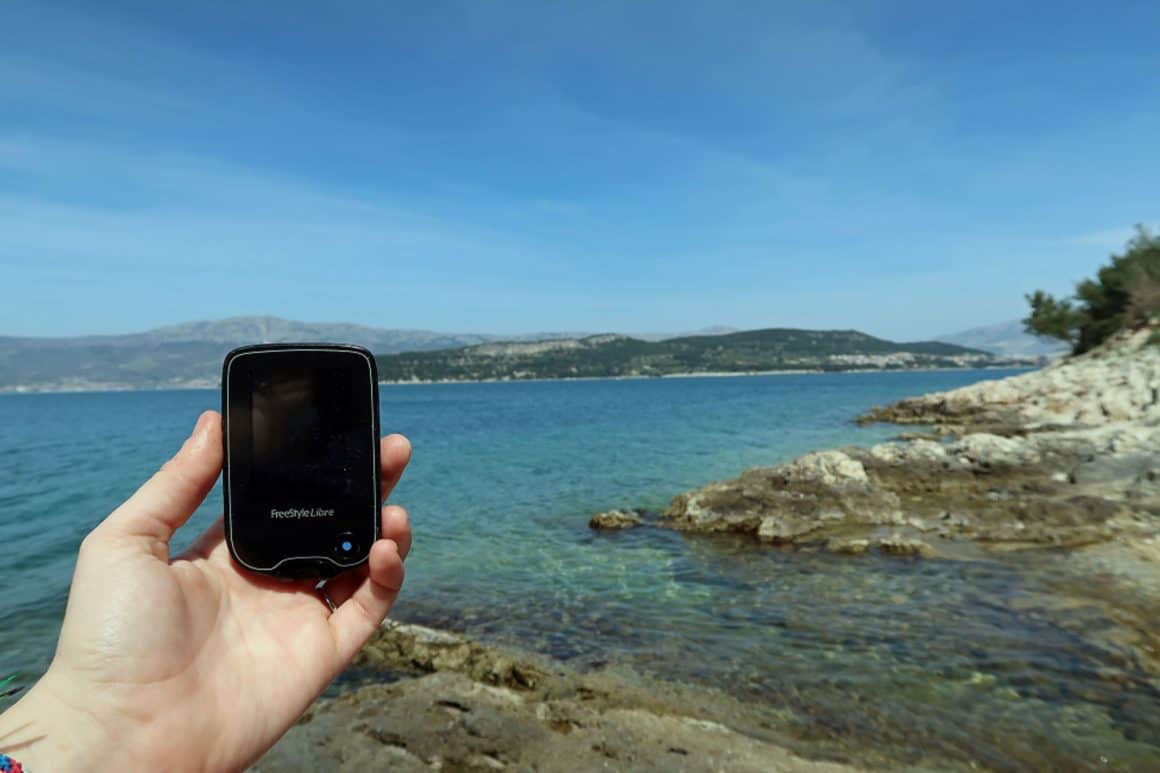
Step 1: Gather Your Supplies
Regardless of the length of your trip, you are going to need adequate supplies. As a rule, I always suggest bringing 3 times as much as you need for the duration of your trip.
So, for example, if I need 5 bottles of insulin, 15 infusion sets, 5 insulin pens, 10 reservoirs, 5 boxes of test strips, then I am going to bring three times as much.
Why? Because type 1 diabetes is so unpredictable.
Travelling with Insulin
Your insulin could die in the heat (more on that later), your diabetic supplies could be stolen, misplaced or damaged, or you could be caught in a national disaster (yes, seriously.) The reality is, if you don’t have insulin, you will die, so it’s important to take more than you need to prepare for every scenario.
In some countries, it’s difficult to obtain more insulin than you need for a trip. However, most insurance companies will allow you to request more supplies if you explain you are heading off on a trip, OR you can source the cheapest place to gain insulin in the countries you are visiting.

Step 2: Keep Your Insulin Cool While Travelling
As mentioned, insulin keeps you alive, so if it’s not working, then we can’t travel. Your insulin is going to be going on long-haul flights and long-haul bus journeys. It’s going to experience hot climates, cold climates, and high altitudes. Therefore, it needs protecting. In order for insulin to work, it needs to be kept at a cool temperature.
The use of Frio bags or similar insulin travel cases will help keep your insulin at the required temperature for the full duration of your trip. Thus, ensuring you can use it.
You will know your insulin has “died” if it’s gone a cloudy white colour. Under NO circumstances should you use insulin that has died.
Related: International Health Insurance Review: A Guide to Nomad Insurance

Step 3: Learn to Carbohydrate Count
If you are on an insulin pump, you will already know how to carb count because it’s part of the training.
But, if you are on insulin pens, then perhaps you haven’t mastered the skill yet. When we inject insulin, the amount of insulin we require is based on the carbohydrates of a food –not sugar, fat, salt, etc.
The carb counting method allows you to count carbs and work out your insulin dose based on “carb ratios”.
For example, my carb ratio is: 8g=1 unit of insulin. What this means is that for every 8g of carbs, I take 1 unit of insulin.
Once you’ve learned the correct ratio, it means your blood sugars will stay within range. Carb counting can be self-taught, or you can take a course. You should ask your local healthcare professional for more info on this.
Traveling with diabetes means new foods, and you guessed it –new carbs! This means you are going to need to calculate the insulin you need for foods you’ve never tried before. There are a few things to help with this.
Get yourself a “Carbs & Cals” book or app, or download MyFitnessPal.
The “Carbs & Cals” book will give you a visual representation of carb portions and a suggested carbohydrate range, and the app will do the same.
This means if you see or try a new food, you can take an estimated carb count. Learning to count carbs is essential for travelling with diabetes.

Step 4: Get Yourself a Doctors Note
Whether you have to pay for a doctors letter (you really shouldn’t!), or not, it’s really important to have one from your diabetes consultant. This document will explain that you are type 1 diabetic, that you will carry insulin and diabetic supplies and most importantly if you are on an insulin pump.

Bear in mind that your insulin pump cannot go through the body scanners in airports. (Overarch x-rays are fine). You can ask for an alternative pat-down and for them to swipe your pump for explosives.
Doctors letters aren’t just useful for airports, they are also useful for border control and spot checks in tourist destinations. For example, in the Eiffel tower, you may need a doctors letter explaining your insulin pump (there is the famous story of the boy who was denied).
Also, at the border control in Vietnam I had a very confused police officer thinking I was transporting drugs until I gave him my doctors letter. This leads onto an important tip;
Translate your doctor’s letter into the language of the chosen country. Most people will not have a clue what diabetes is at all, so say more simple words like “insulin, insulin”, and if all else fails, say the word “sick”. Honestly, it can be frustrating, but just be prepared and you will be fine.
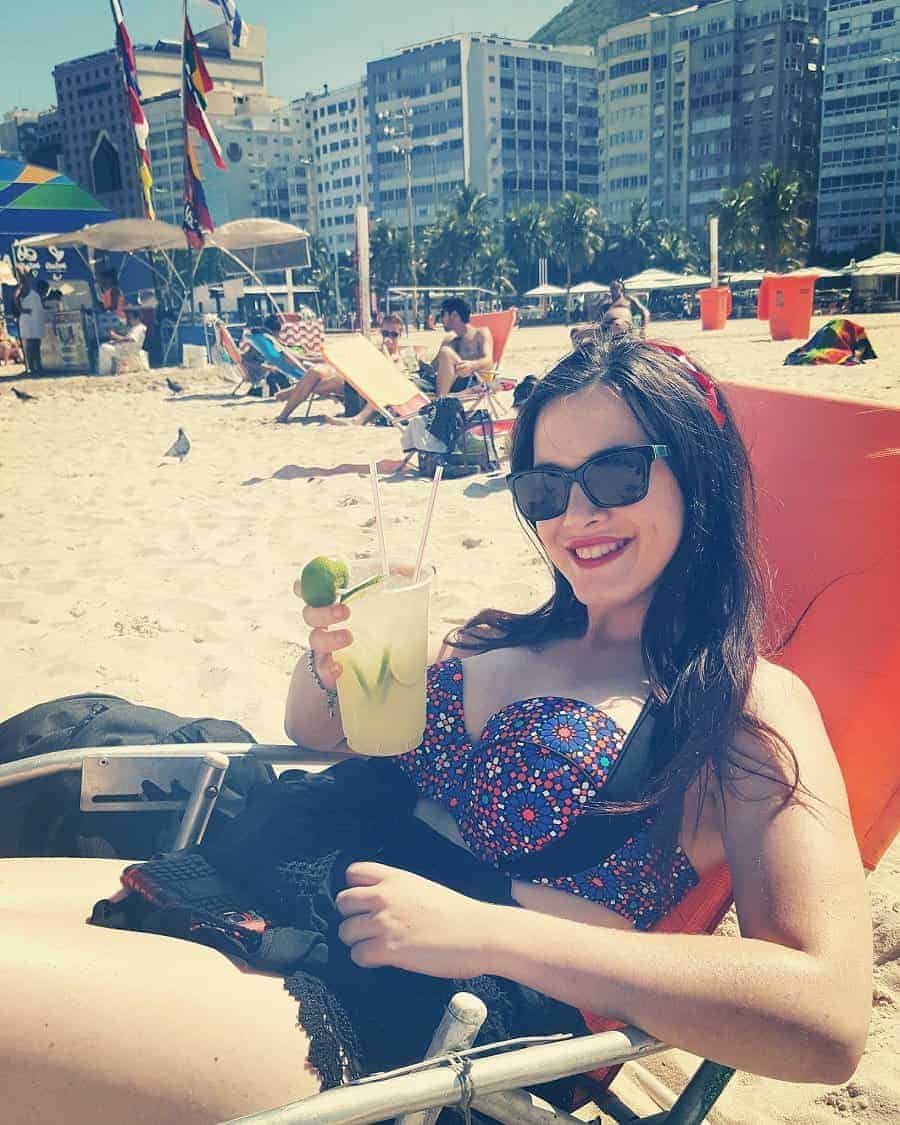
Step 5: Wear Some Diabetic ID
When you are traveling in a new country, where the locals don’t speak your language, it’s important you have some form of medical identification.
You can get cute bracelets, phone charms, necklaces or temporary tattoos (if that’s your thing). It’s also a good idea to put your lock screen on your phone to something like “If I am passed out, call an ambulance, I am diabetic” –in the language of the country you are in.
Don’t be afraid to tell people about your type 1 diabetes. Use it as an opportunity to educate and inform. I know how frustrating it is for someone to think you’ve got an illness because you ate too much sugar, but help break the misconceptions by telling your story.
Everyone I’ve met has been super interested to learn about my illness, and surprised that they didn’t know about it! I have yet to meet another type 1 diabetic on my travels, but I know they are out there, so hopefully one day!
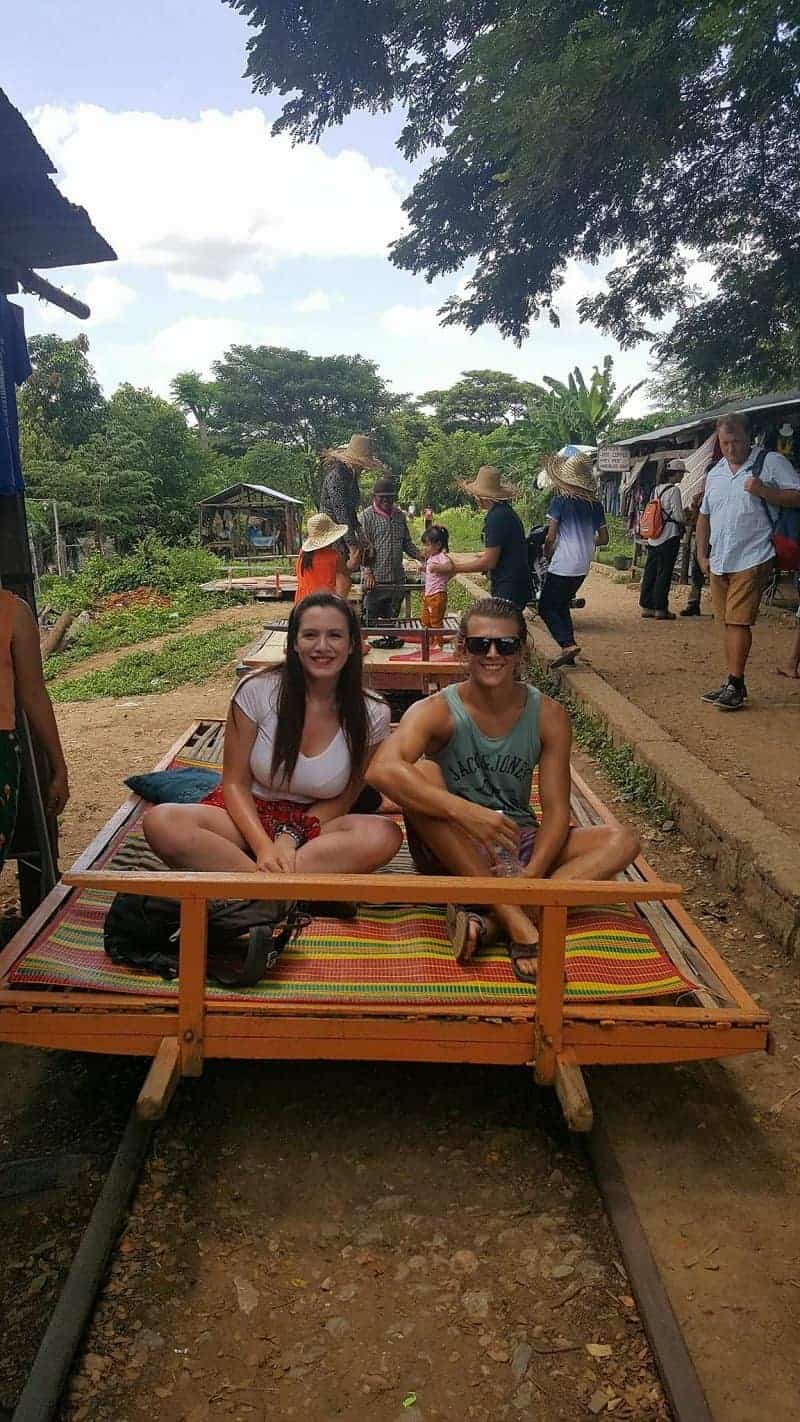
For more tips on traveling with diabetes, you can check out my blog or eBook! Diabetes doesn’t hold me back, and it shouldn’t hold you back either!



